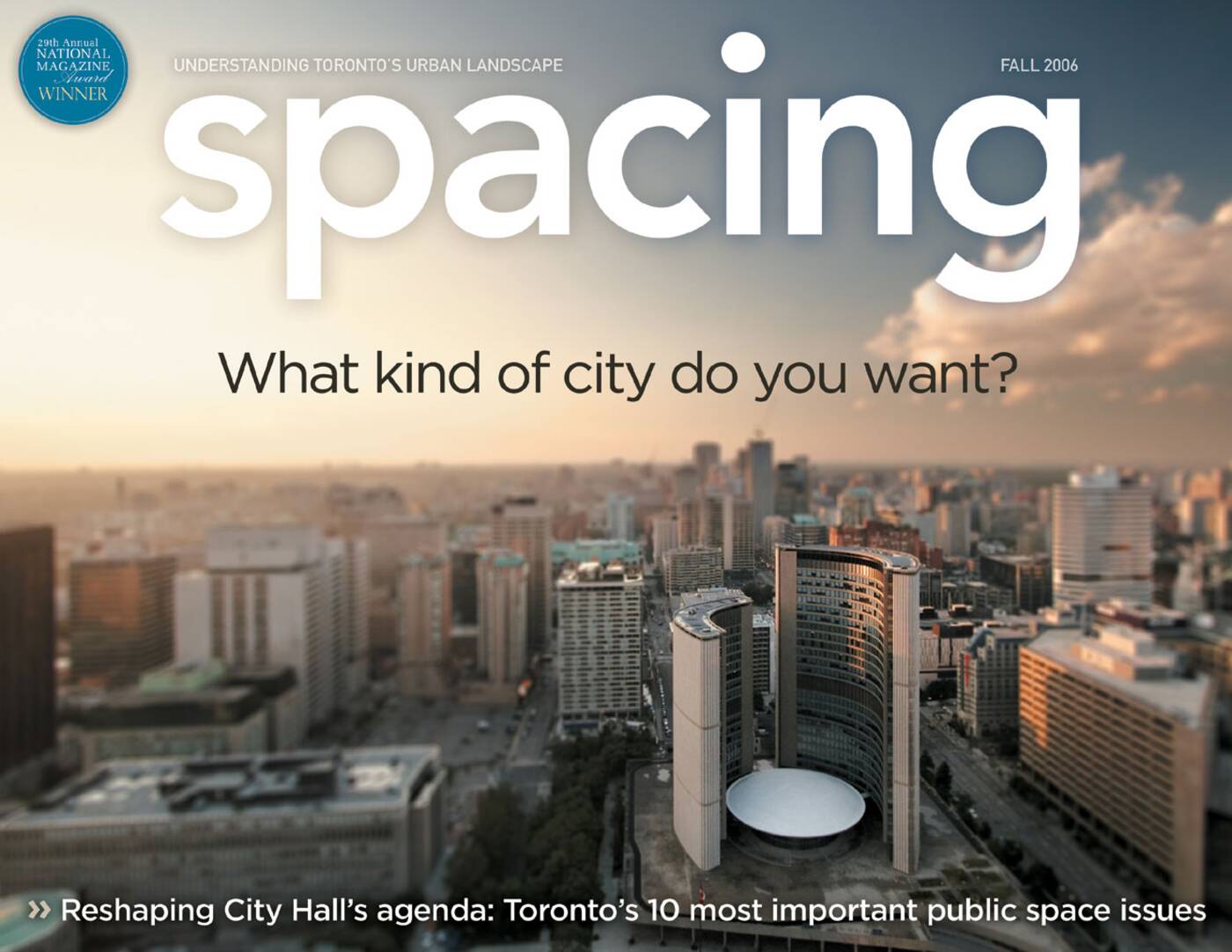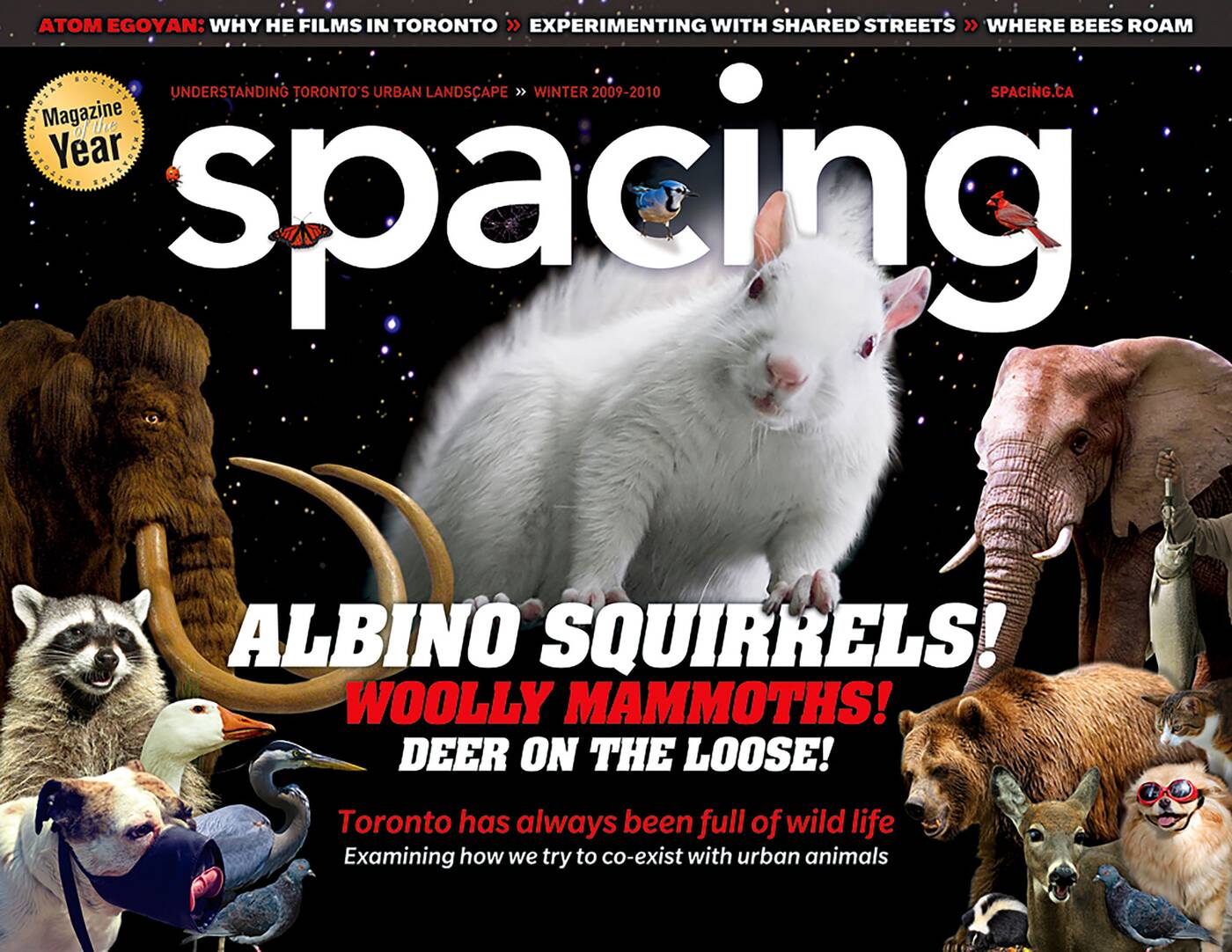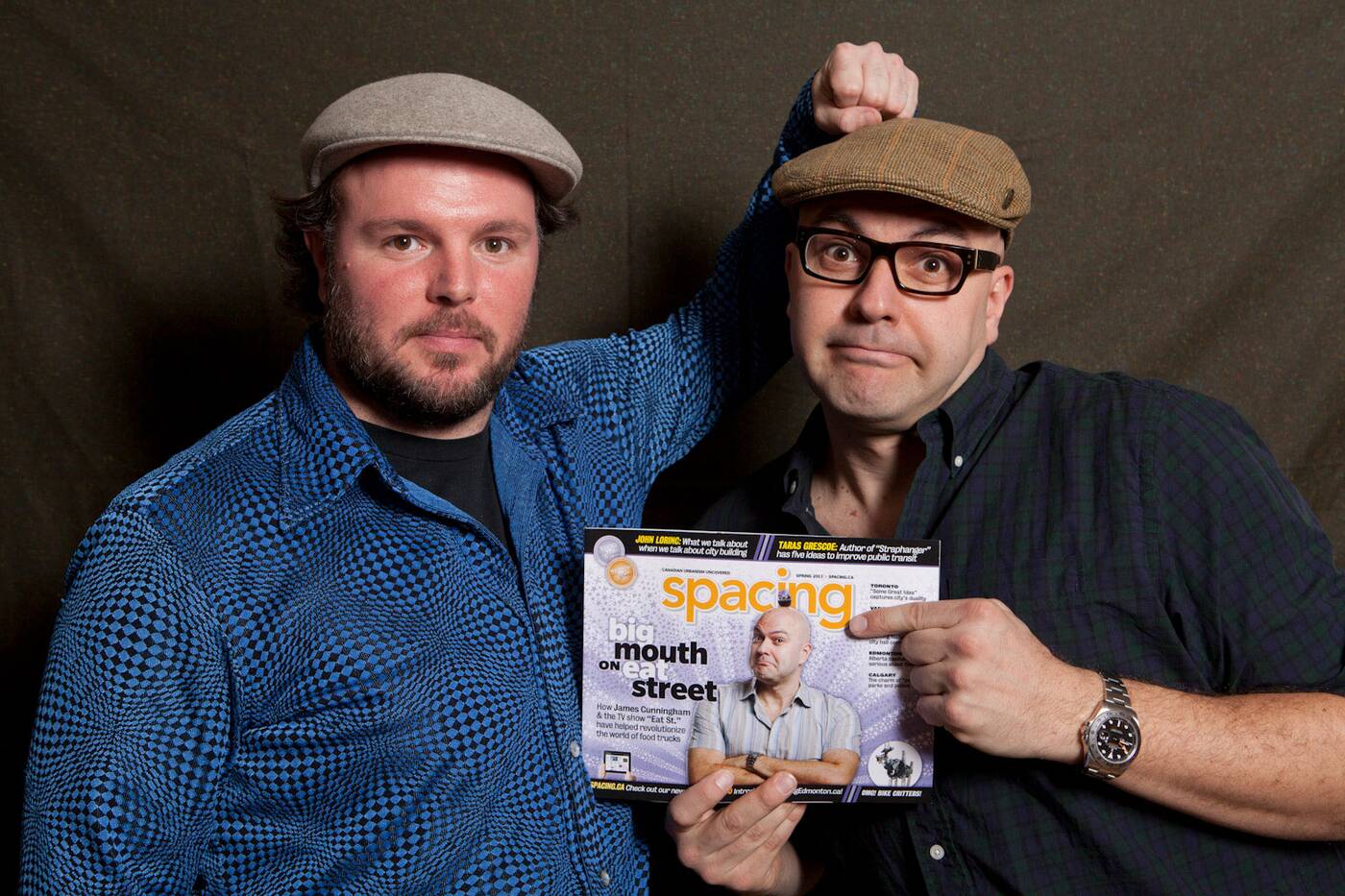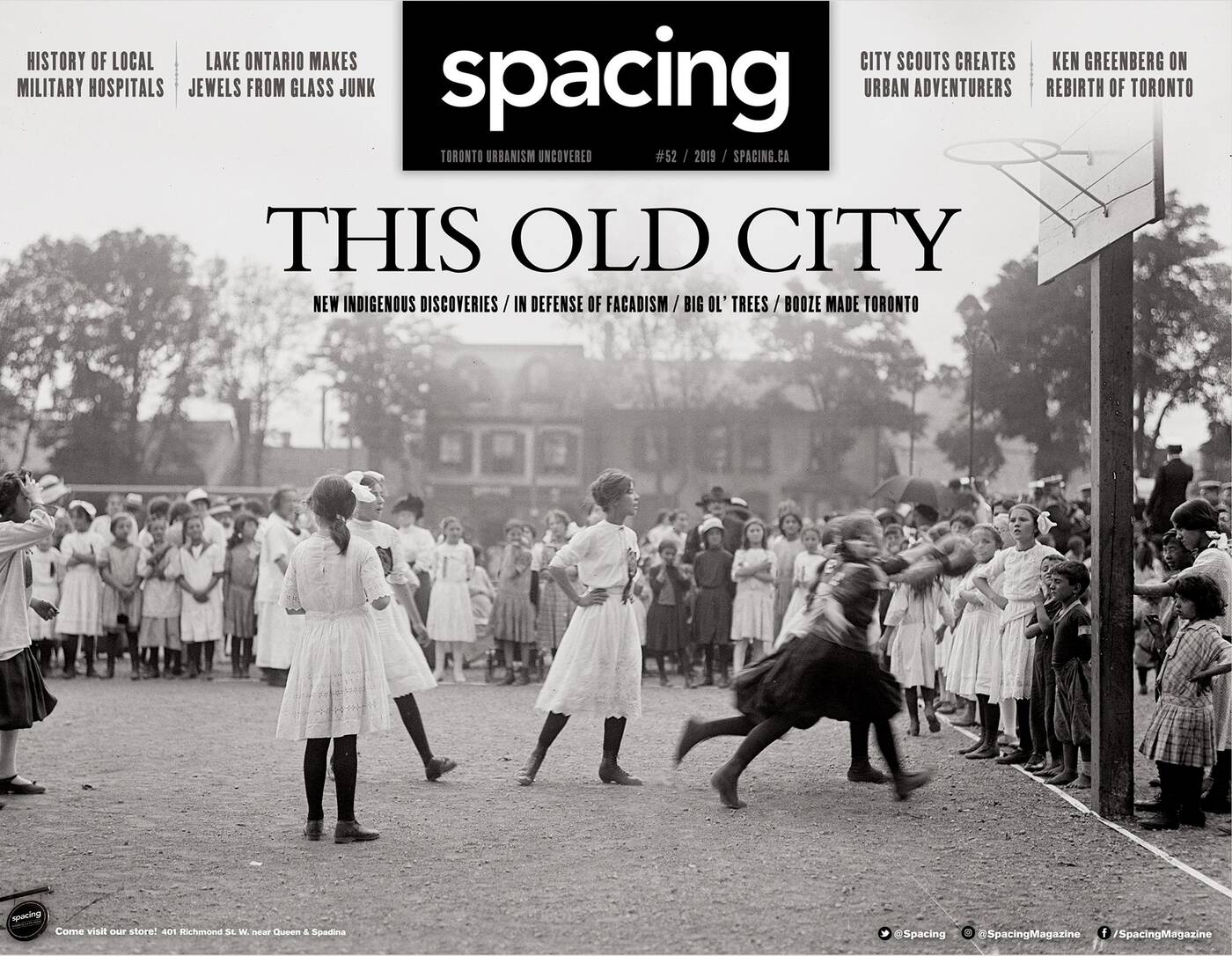
Spacing magazine marks 20 years as the essential antidote to Toronto Life
Spacing — the Toronto-based magazine focused on the city's public realm — is celebrating its 65th issue and 20th anniversary, complete with a party, book launch and exhibition opening.
On Dec. 2 from 7 p.m. to 11 p.m. at the UrbanSpace Gallery and Spacing Store on 401 Richmond St. W., Spacing co-founder Matthew Blackett and the rest of the magazine crew will host a celebration of all that makes the publication unique.
"It feels great in many ways to be able to get this far as an independent magazine, in this kind of media environment, so we're proud of ourselves," Blackett says. "It's been a challenge, just like anyone else that's been working in this industry."
Spacing, which releases four issues each year, has also published 10 books about Toronto.

Spacing Magazine issue from 2006. Image via Spacing Magazine.
The exhibition will run from Dec. 2 to Jan. 27, and will be free to the public during the hours of 401 Richmond.
It will feature awards the magazine has won, screenshots of what the magazine used to look like online and artifacts from the magazine's history, which includes a copy of the picnic table from Grange Park Blackett and his fellow founders met at in September 2002 to discuss creating the publication.
"It's like some elements of the magazine come to life onto the walls of the gallery," he says.
After the exhibit ends, Blackett intends to still explore some of the material in the Spacing podcast in early 2024.
"I think what we're kind of interested in doing this year is reexploring those early topics that galvanized our magazine. So posters and street furniture and TTC subway design," Blackett says.
"Things that got our attention and got the wider attention of our readers and people in the city."

An issue of Spacing Magazine from winter 2009-2010. Image via Spacing Magazine.
The landmark issue, double the size of its normal editions, gives Spacing a chance to have a bit more fun — like imagining what a century of Spacing magazine covers would look like.
It will also feature a new public space agenda for the city from senior editor John Lawrence, to reflect the entirely different urban landscape in 2023 compared to 2003.
The Big Book of Spacing meanwhile, will consist of 248 full-colour pages with the best of the best taken from Spacing's previous issues, its website and books from the previous two decades.

Founder Matt Blackett posing with James Cunningham after the release of a 2013 issue of the magazine. Photo by Rannie Turinham via Spacing Magazine.
Each piece has been updated by the original writer with new reflections, side notes, afterthoughts, as well as factual updates.
"Our mandate was to uncover the joys, the obstacles and politics of Toronto's urban landscape. That was like our mission. So the joy was a huge part of that. So that's worthwhile," Blackett says.
"It was to try to overcome the pervasive cynicism in city-building that existed in the late '90s, early 2000s."
To anyone who might be encountering Spacing for the first time via its anniversary celebrations, the book or the exhibition, Blackett thinks they'll reflect a positive attitude about the city.

Spacing Magazine issue #52 from 2019. Image via Spacing Magazine.
Sure, criticism is warranted and necessary, but there's been lots to love about Toronto.
"Lots of blogs and newspapers and TV stations now report and write about those issues a fair bit. So they've all crowded into our space in some way," he says.
"I think that's actually... just an overall really good thing, because it just means more people have a better understanding about this stuff."
Spacing Magazine
Latest Videos
Latest Videos
Join the conversation Load comments







